If you build it (better), they will come. That seems to be the message the new business jet market is sending OEMs. According to data from the General Aviation Manufacturers Association (GAMA), business jet shipments increased by 12.5 percent in the first half of 2019 compared to the year-ago period. That increase is driven in large part by deliveries of new models plowing new niche market territory and/or offering superior value propositions. Such comparatively new models include the Gulfstream G500, Pilatus PC-24, and Cirrus SF50 Vision. Concurrently, the used jet market is softening, according to business aviation data company JetNet, with average days of used jets on the market increasing to 297, a jump of 28, and the preowned inventory edging up to 9.5 percent, though still within traditional "sellers' market" territory.
However, against the optimism surrounding new jet sales, global business capital expenditures (capex) are falling in key business jet markets, including North America, Europe, and Asia-Pacific. London-based consultancy S&P Global reports that “the share of cash flow directed to capex versus other uses is at its lowest ebb since 2007.”
And almost everyone remembers what happened to the new business jet sales market in the wake of the 2008 worldwide recession: deliveries fell precipitously and never really recovered. They have averaged around 700 per year in the ensuing years. Business aviation analyst Brian Foley thinks that number could dive to as low as 550 should another recession hit, and that likely will end the production runs of some of the 41 models of bizjets currently in production. This suggests two things: 1.) Most OEMs will continue to focus greater resources on the large- and ultra-large-cabin market, as they see the typical customers for those aircraft—large fractional and charter operators, governments, Fortune 100 corporations, and ultra-high-net-worth individuals—as the most insulated from global economic gyrations, and; 2.) For new models to succeed, they must offer superior value propositions across a broad spectrum that includes utility, range, comfort, connectivity, convenience, operating and maintenance economics, and safety.
In some cases satisfying the second requirement has already generated a new niche of aircraft, such as the aforementioned Pilatus PC-24 and the Cirrus SF50. In others, it means something as basic as speed with Mach 0.9 to Mach 0.925 high cruise speeds now the new benchmark for the large-cabin crowd, while supersonic ambitions continue to slowly gain traction. One thing that will not satisfy the requirement: offering new upholstery schemes, paint, tweaked avionics, or faster Wi-Fi and expecting those upgrades to carry an existing model’s sales very far into the future. Those days appear to be over.
The Supersonics
The march to a civil supersonic business aircraft made some progress this year as the FAA issued a notice of proposed rulemaking (NPRM) this summer which would enable supersonic flight testing. Still, the various supersonic developers seem years away from fielding prototype aircraft.
Aerion AS2
Price: $120 million
Passengers: 12
Range: 5,000+ nm
Over the last decade, Aerion has announced partnerships with several major aerospace entities, including Airbus, Lockheed Martin, Spirit Aerosystems, and GE. Now it’s Boeing’s turn. In February the two companies announced that Boeing had made a “significant investment,” which sources told AIN at the time amounted to acquiring 40 percent of Aerion for “several hundred million” dollars and taking seats on the company’s board. Under the agreement, Boeing will provide engineering, manufacturing, flight-test resources, and “strategic vertical content” for the AS2.
Since its founding 16 years ago, Aerion has acquired 22 patents but has yet to produce a flying prototype. The company now says that will happen in 2023.
Aerion introduced its AS2 12-passenger business jet design in 2014. The company unveiled the AS2’s GE Affinity engine design in 2018. The AS2 features a supersonic natural laminar-flow wing, a range of at least 5,000 nm, and a cabin cross-section nearly the size of a Gulfstream G550’s. The 30-foot-long cabin, which is 17 feet shorter than the G550’s, will feature a two-lounge layout, galley, and both forward and aft lavatories, plus a baggage compartment accessible in flight. Mtow is 121,000 pounds and the fuselage is 170 feet long. Balanced field length is 7,500 feet at mtow, but that is reduced to 6,000 at weights of less than 100,000 pounds. Flying at the lighter weight reduces range by approximately 20 percent. Maximum speed is Mach 1.6; however, the aircraft is designed to cruise efficiently at Mach 0.95 to comply with existing supersonic overflight bans.
To date, Flexjet is the only publicly announced customer, signing a letter of intent in 2015 to acquire 20 AS2s with plans to offer them to its Global Lease customers.
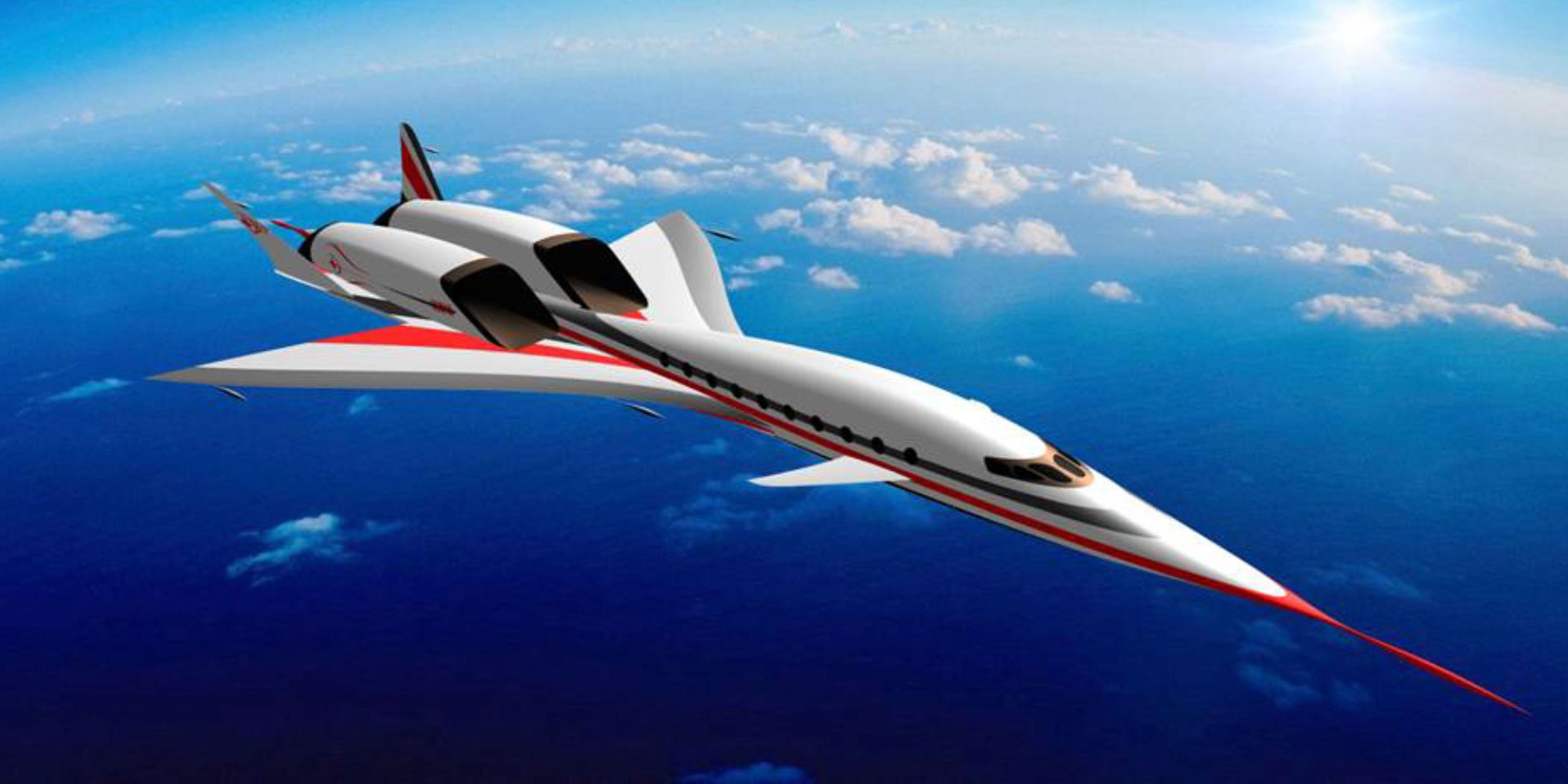
HyperMach SonicStar
Price: $220 million
Passengers: 32
Range: 8,300 nm
This revised design proposes a top speed of Mach 5.5, a range of 8,300 nm, seating for 32 passengers, and a unit price of $220 million. First flight is now planned for 2025 with a certification target of 2028. A prototype of the aircraft’s 76,000-pound-thrust H-Magjet 5500 hybrid turbofan ramjet engines could be tested by year-end.
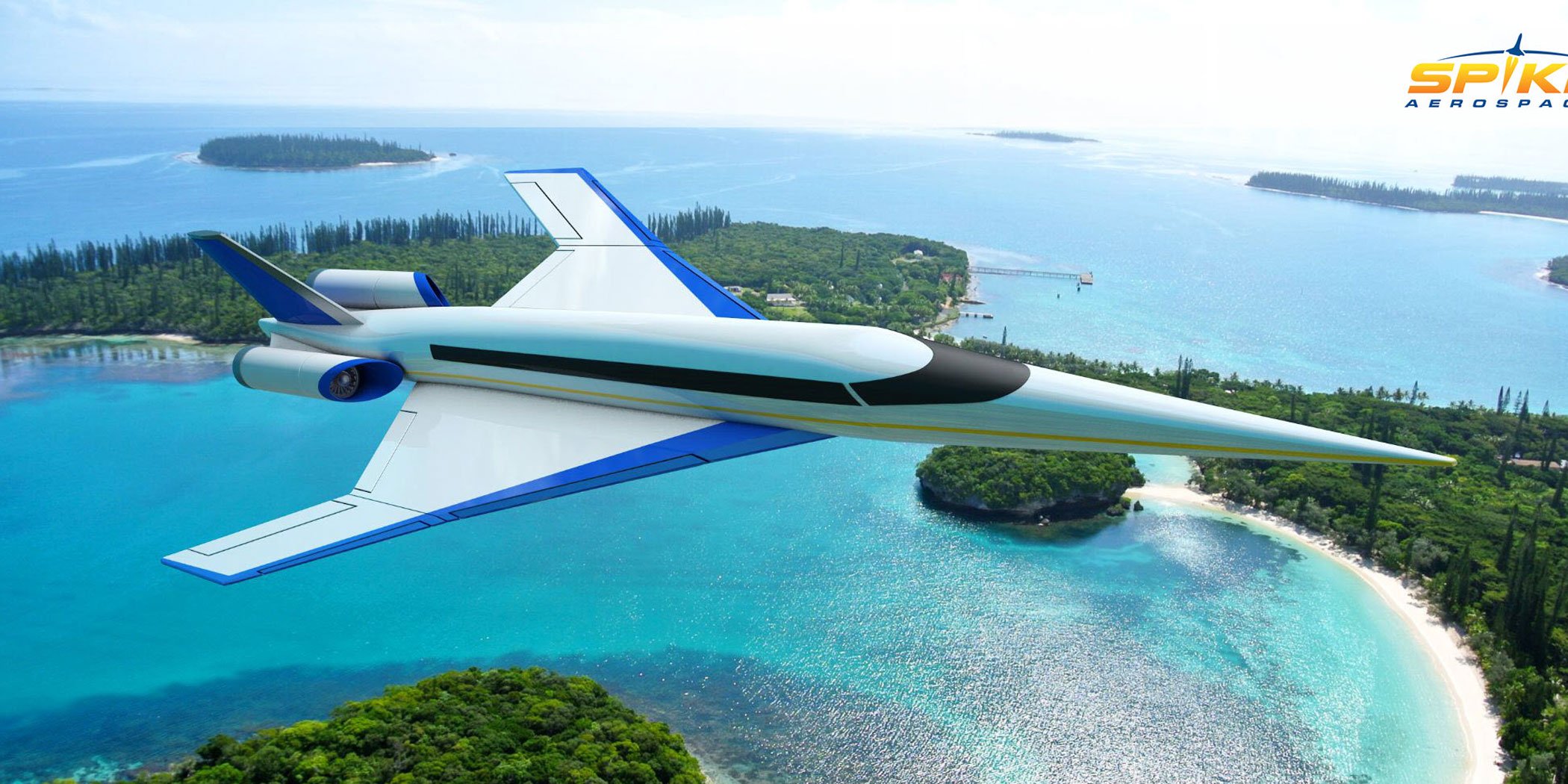
Spike Aerospace S-512
Price: $80-$100 million
Passengers: 18
Range: 6,200 nm
Spike Aerospace is currently building a subscale demonstration aircraft. The company has developed partnerships with Siemens, Quartus, Aernnova, Greenpoint, BRPH, and others. The S-512 would seat up to 18 passengers, with a range of 6,200 nm and a cruise speed of Mach 1.6. Spike is looking for a low- to medium-bypass-ratio engine producing about 20,000 pounds of thrust at sea level.
The company continues to search for additional funding for the $1 billion program and estimates a market for 600 aircraft between 2020 and 2030. Spike's goal is to bring an aircraft to market by 2022.

Boom Supersonic
Price: $200 million
Passengers: 55-75
Range: 4,500 nm
Boom Supersonic had revised and renamed its $200 million tri-jet supersonic design. Now called “Overture,” the aircraft is designed to accommodate 55-75 passengers in airline configuration, have a long-range cruise speed of Mach 2.2, and an unrefueled range of 4,500 nm. To date, the company has raised more than $140 million in seed money and employs 150.
It is currently building a one-third scale technology demonstration aircraft, the XB-1 “Baby Boom,” powered by three General Electric J85-15s with variable-geometry intake and exhaust, Honeywell avionics, Tencate carbon-fiber prepreg, and Stratasys 3D-printed components. The scale aircraft will be used to evaluate the larger aircraft's delta-wing, carbon-fiber fuselage design.
This year, Boom began announcing a series of commercial partnerships including with Dassault Systemes for use of its 3DExperience platform design tool and Hoar Program Management for assistance in manufacturing-site location selection. Boom holds orders for 30 aircraft from Japan Airlines and Virgin Group.
United Aircraft Supersonic Business Jet
Russia’s United Aircraft Corporation (UAC) has ditched plans to develop the military’s Tu-160 supersonic bomber into a business aircraft and has embarked on a research program aimed at developing a clean-sheet design. The program is in its initial design stages and spent a modest $22 million to date. Plans at this point call for a 16- to 19-passenger aircraft capable of speeds up to Mach 2.5. Range and price are unknown at this point. UAC says a production prototype could be flying by 2026.
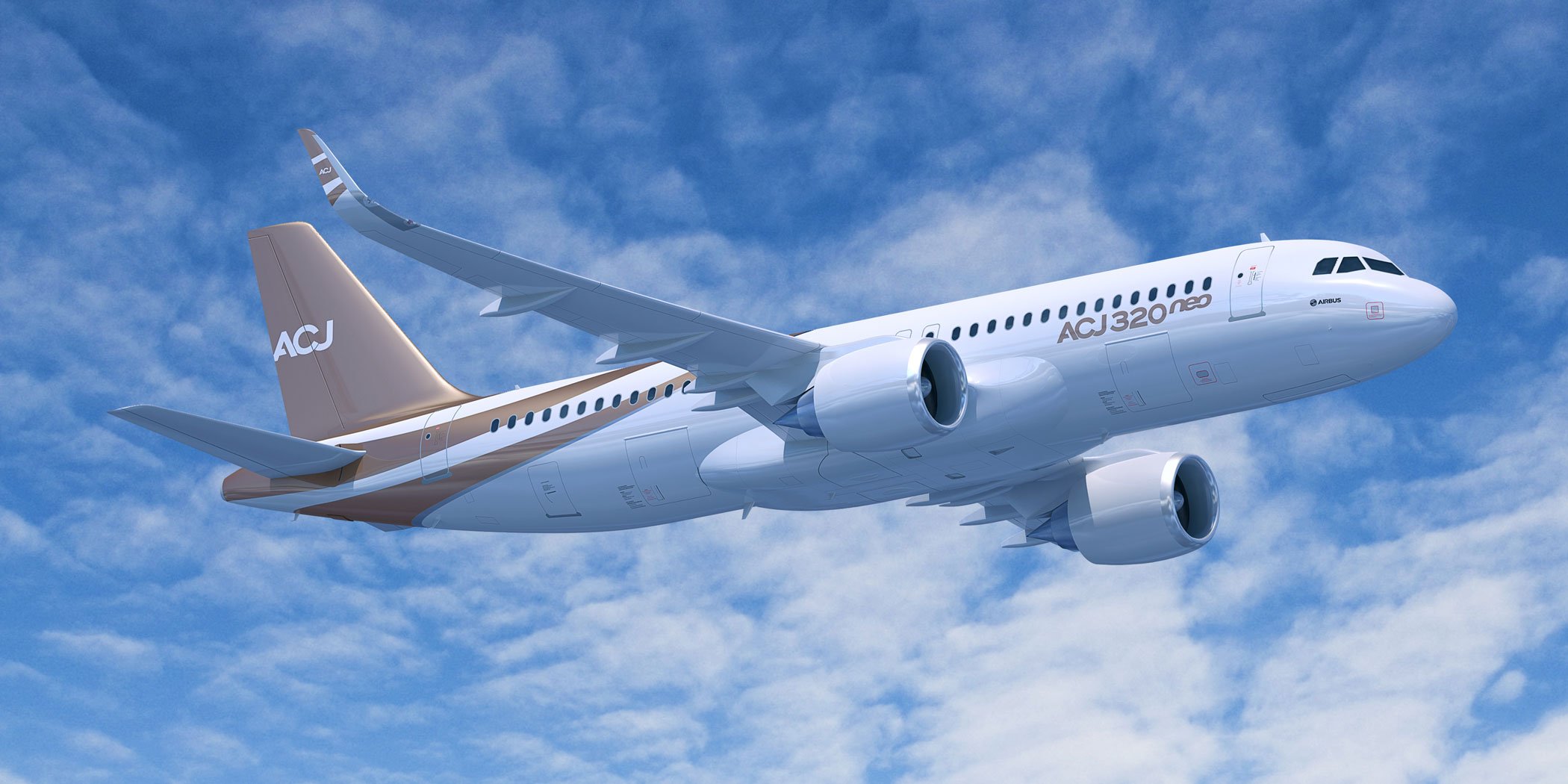
Bizliners
Airbus ACJ320neo and ACJ319neo
Price with mid-range cabin completion: ACJ320neo, $95 million; ACJ319neo $85 million
Passengers (typical): ACJneo, 25; ACJ319neo, 19
Range: ACJ320neo, 6,000 nm; ACJ319neo, 6,750 nm
Airbus Corporate Jets has begun deliveries of its new “neo” (new engine option) family of narrowbody ACJs, the ACJ320neo and the ACJ319neo to completion centers. More efficient engines and wingtip “Sharklets” enable significant improvements in rate of climb, range, and payload for both aircraft, while at the same time cutting specific fuel consumption, emissions, and noise.
Airbus opted to offer customers two new-generation, fuel-efficient engine choices: the first is the Leap-1A from CFM International and the other is the Pratt & Whitney PW1100G geared turbofan. Both neo models offer fly-by-wire controls, advanced avionics, and significant range improvements over their legacy predecessors.
The ACJ320neo can transport 25 passengers more than 6,000 nm, a big jump from the 4,300-nm, eight-passenger range of the ACJ320. The ACJ319neo cabin is commonly configured for 19 passengers and the aircraft has a range of 6,750 nm—more than 600 nm better than the legacy ACJ319, with eight passengers. The cabins on the ACJ320neo and ACJ319neo are about 12 feet wide; the former is about 90 feet long, while the latter is 78 feet long. According to Airbus Corporate Jets, orders and commitments for ACJ319neo and ACJ320neo now total 15.
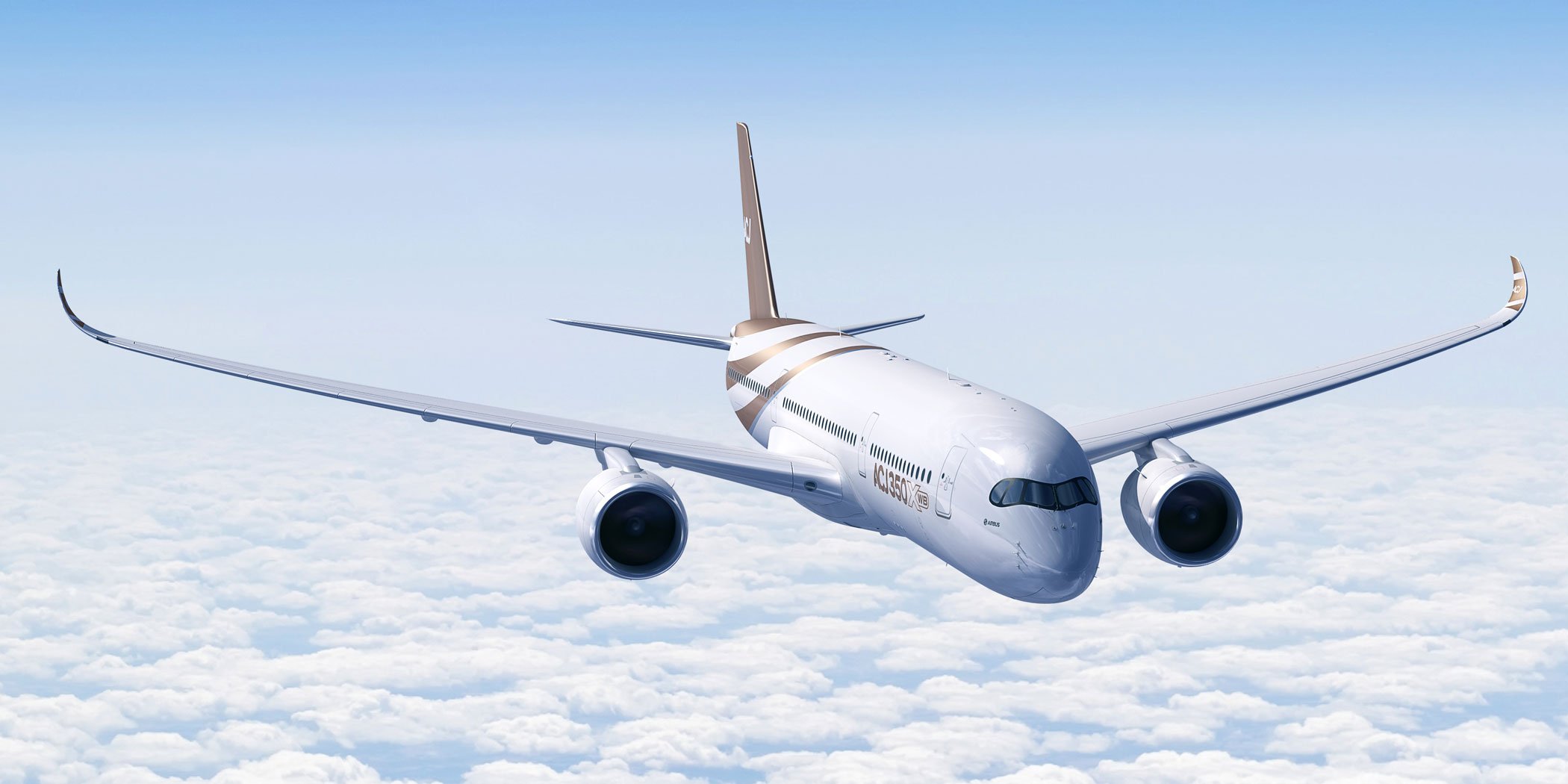
Airbus ACJ350-900 XWB
Price: $254 million, plus interior
Maximum Range: 11,100 nm (with 25 passengers)
Designed to serve the needs of the rarified few, this widebody twinjet airliner is being made available as an “Airbus Corporate Jet” (ACJ). Top speed is Mach 0.89. Maximum takeoff weight is close to 600,000 pounds. Takeoff distance at maximum weight is 8,770 feet.
The cabin measures nearly 170 feet long, more than 18 feet wide, and eight feet tall, yielding more than 3,000 sq ft of floor space. Airbus is introducing a new Easyfit streamlined process for outfitting the cabin interior that utilizes the cabin wall attachment points. The company also has floated a few interior design ideas, including a grand entryway; above-deck crew rest areas; forward and mid-cabin gourmet galleys; a forward master stateroom suite with bedroom, bathroom with shower and private office; a mid-cabin lounge; an oversized circular dining table with seating for 10; three junior staterooms with shared bathroom and shower; and an aft cabin media room/theater with a dozen reclining seats and a large flat-screen monitor mounted to the aft bulkhead.
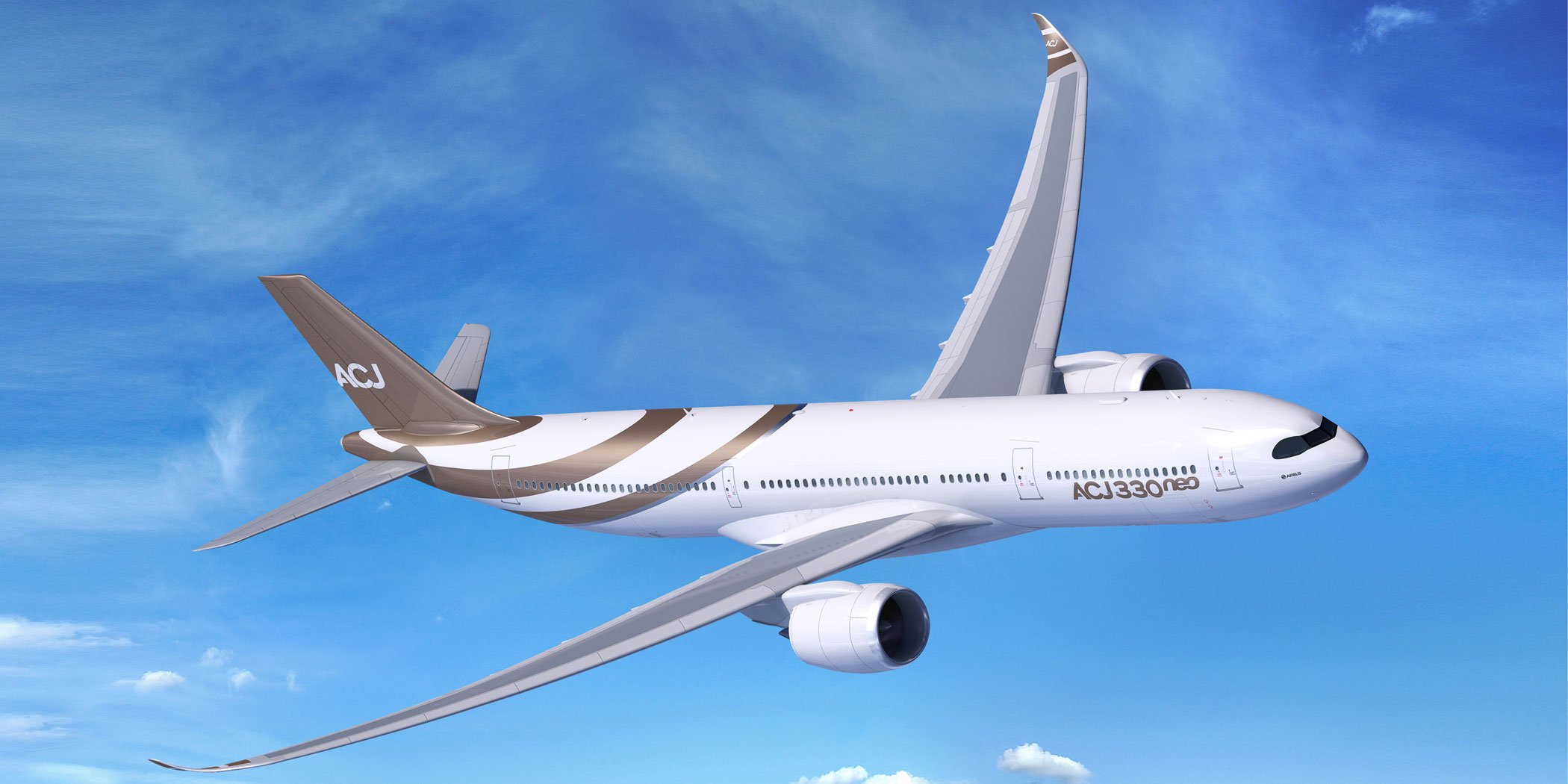
Airbus ACJ330neo
Price: $300 million +
Passengers: 25+
Range: 9,400 nm
The new VIP variant of the Airbus A330neo widebody jetliner will be able to fly 25 passengers 9,400 nm enabling nonstop flights from Europe to Australia. The A330neo will be powered by the new generation Rolls-Royce Trent 7000 engines and incorporate a new high-span wing and wingtip Sharklets similar to those on the A350 XWB. The improvements deliver a 12 percent fuel burn reduction compared to a standard A330 and deliver payload and range improvements. Other new ACJ330neo features include an onboard airport navigation system, runway overrun prevention system, and LED exterior lights.
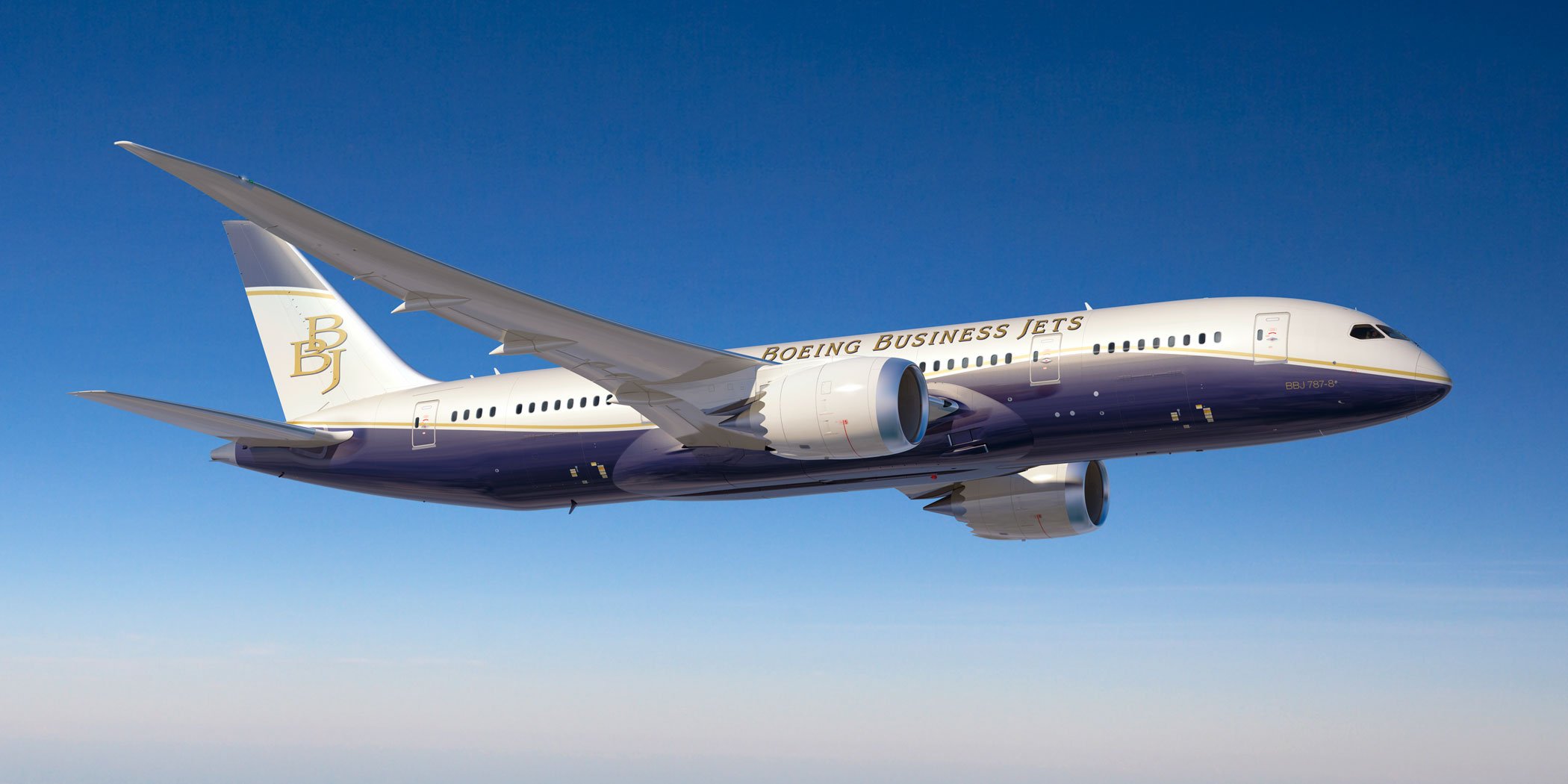
Boeing BBJ Max Family
Price (completed): $100+ million
Passengers: 8-25 (typical)
Range: 6,255 to 7,000 nm
Well-publicized problems with the Boeing 737 Max have halted deliveries of the aircraft for now. The BBJ Max is the BBJ version of Boeing's new 737 Max family. Boeing Business Jets delivered its first BBJ Max—a Max 8—late last year.
Boeing announced in 2013 that it would build executive versions of the 737 Max fitted with CFM Leap 1-B engines. The aircraft are offered in three variants based on the legacy BBJ1, BBJ2, and BBJ3, respectively. The models have almost the same cabin sizes as their predecessors but significantly more range and, in the case of the BBJ Max 7, more luggage space. The BBJ Max 7 is 6 feet, 4 inches longer than the BBJ1 with a range of 7,000 nm (four passengers), a significant improvement over the BBJ1, but only requiring seven auxiliary belly tanks as opposed to nine on the BBJ1, and freeing up more cargo space. The BBJ Max 8 has a range of 6,325 nm, a 14.6 percent improvement over the BBJ2. The BBJ Max 9 offers a 6,255-nm range, 16.2 percent more than the BBJ3.
The new aircraft are 14 percent more fuel-efficient than current-production single-aisle BBJs, thanks to new-design winglets and the new engines, which are mounted farther forward and higher on the wing and attached by new and more aerodynamic pylons. The Max also gets a more aerodynamic vertical stabilizer. To provide adequate ground clearance for the larger engines, the landing gear was lengthened so the airplane will stand a little taller on the tarmac. The Max employs limited fly-by-wire controls, mainly to the wing spoilers.
Maintenance on the Max will be easier than on legacy BBJs, as fault data, once collected by instruments in the forward equipment bay, is now available for technicians and pilots on the cockpit display screens. The Max also holds more maintenance data on its enhanced onboard network system and network file server, doubling the amount of maintenance information available during flight and transmitting it live to ground stations so issues can be quickly resolved in flight or shortly after the airplane lands.
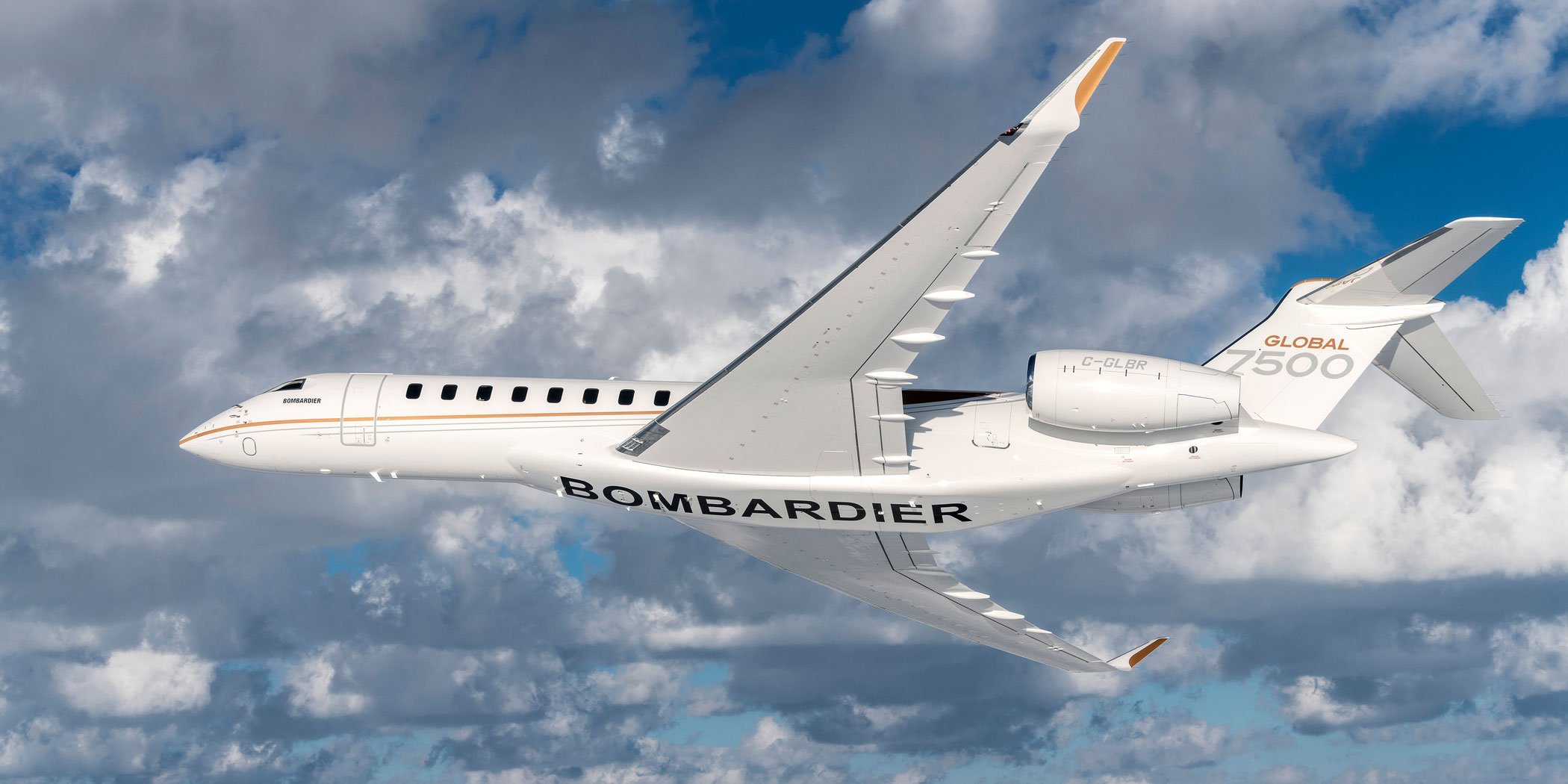
Large-cabin, Long-range
Bombardier Global 7500
Passengers: up to 19
Range: 7,700 nm
Price: $73 million
The new Bombardier Global 7500 uses the same fuselage cross-section as its legacy predecessors (6 feet, 3 inches tall and 8 feet, 2 inches wide) but stretches it by 11 feet to provide 2,637 cu ft of cabin space. Virtually everything else about the aircraft is new including the larger cabin windows, proprietary Nuage passenger seats, and GE Aviation Passport engines. The engines are based on the guts of the high-efficiency CFM Leap models being developed for new-generation Airbuses and Boeings. Among the technologies incorporated into the engines are a 52-inch titanium “blisk,” a single piece combining the fan blades and disk that is more aerodynamically efficient, saves weight, and reduces vibration.
The 7500 also features full fly-by-wire flight controls with sidesticks; a new, thin, high-speed wing; and the Bombardier Global Vision flight deck. The latter is based on Collins Pro Line Fusion avionics, with the latest safety features and head-up display. Top speed is Mach 0.925.
The hyper-quiet cabin is divided into three- or four-zone layouts. The forward galley can be equipped with multiple ovens including a double convection/microwave and a convection/steam model. The redesigned crew rest areas are larger. The aft lav can be fitted with a steam shower and the capacious 195-cubic-foot baggage hold can be accessed from the cabin at any altitude. The 7500 comes standard with Bombardier’s Wave satcom (the Honeywell JetWave system that runs on Inmarsat’s ka-band satellite network). Entry into service of the aircraft began late last year.
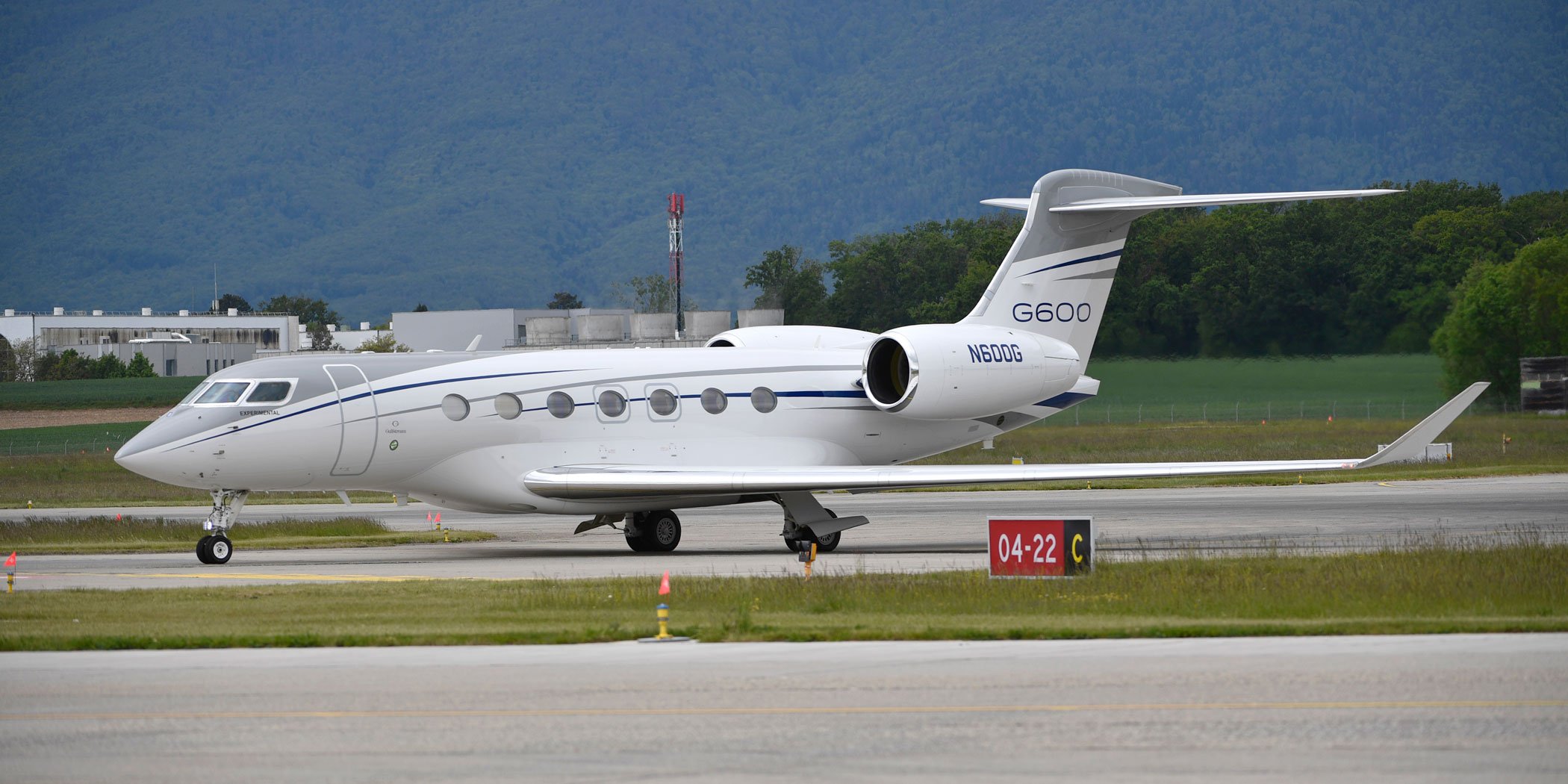
Gulfstream G600
Passengers: up to 19
Range: 6,500 nm
Price: $58 million
Deliveries of Gulfstream’s new 6,500-nm, large-cabin jet began earlier this year. It features full fly-by-wire flight controls, modern avionics, a noticeably wider cabin than legacy models such as the G450 and G550, and engines that are 15 to 20 percent more fuel-efficient than legacy large-cabin aircraft. Power for the aircraft comes from Pratt & Whitney Canada’s new PW815GA powerplants that have the same core technology used in the company’s geared turbofan airliner engines. They have a 10,000-hour time-between-overhaul (TBO) and no midlife-inspection requirement.
The G600’s cabin cross-section measures 91 inches wide and 74 inches tall—about seven inches wider and two inches taller than cabins in the G450 and G550—and the cabin can be configured for up to 19 passengers with four separate living zones as well as an optional crew rest area. The G600 also features a new passenger single-seat design with all seat controls located on the inboard armrests and pockets sculpted into the interior arms for more hip room. Cabin noise level is extremely quiet—less than 50 dBA—and cabin altitude is 4,850 feet at 51,000 feet with100 percent fresh air circulation. The aircraft offers the same enlarged oval windows that are on the G650, forward and aft lavatories, plus a full-size galley that can be located either forward or aft. The 195-cubic-foot baggage hold is accessible in flight through the aft lavatory.
The flight deck features fly-by-wire controls, active-control sidesticks, and the new touchscreen-controlled Symmetry avionics suite, which is driven by Honeywell's Primus Epic platform. The G600's overhead flight deck panels feature three touchscreens instead of the fixed switches and buttons on earlier Gulfstream models.
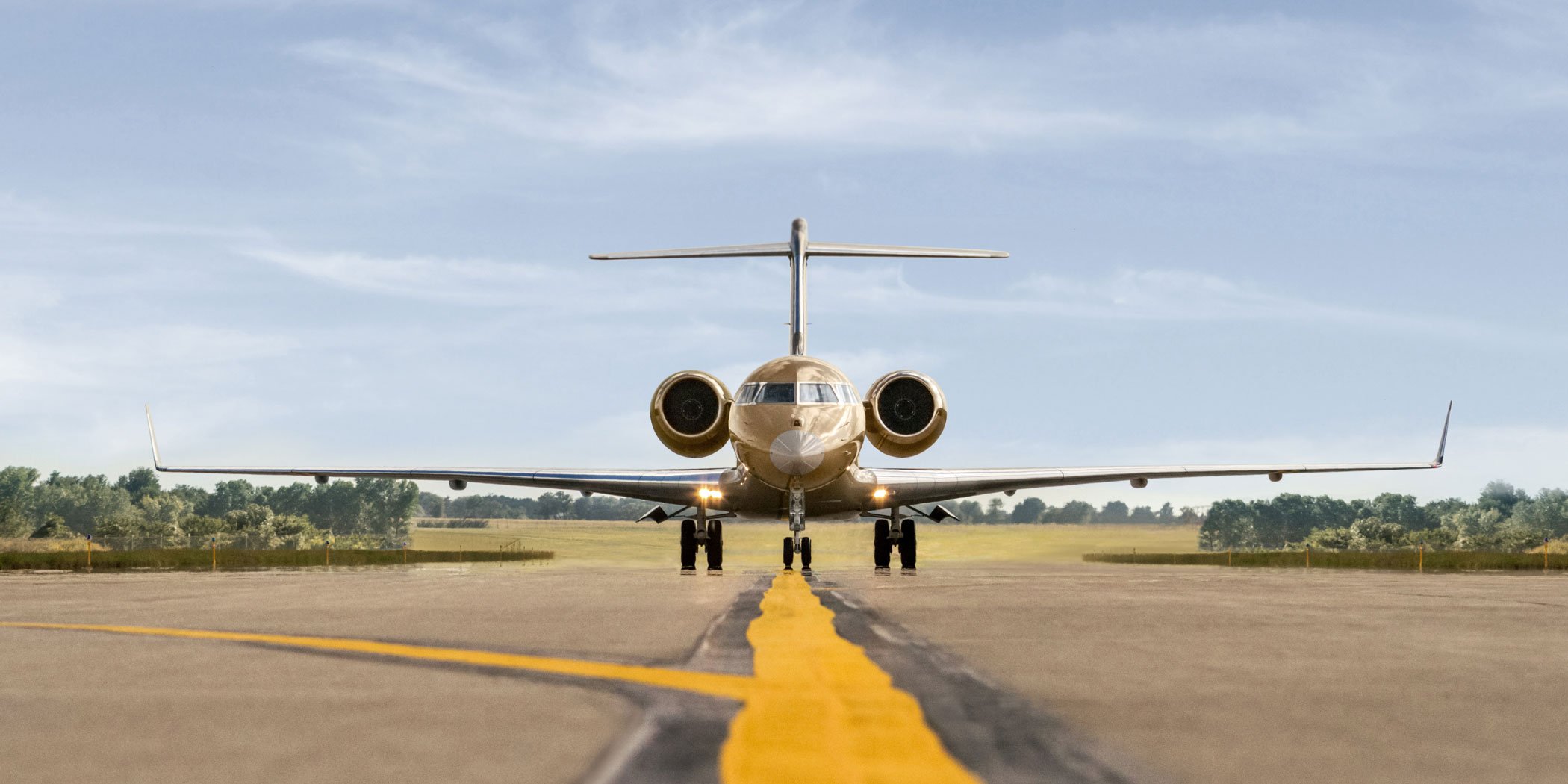
Bombardier Global 6500/5500
Price: 5500, $46.4 million
6500, $54.3 million
Passengers: up to 19
Range: 5,700 nm 5500, 6,600 nm 6500
In May 2018, Bombardier took the wraps off the new Global 5500 and 6500. The models are fresh takes on the legacy Global 5000 and 6000 and they indeed use those aircraft’s fuselage cross-sections. But they feature new engines, wings, interiors, and avionics and offer reduced fuel burn and emissions as well as increased range and passenger comfort.
The new Globals are the launch vehicles for the Rolls-Royce Pearl 15 engine (15,125 pounds of thrust), which discharges 48 percent less smoke and 20 percent less nitrous oxide, is two decibels quieter, burns 7 percent less fuel, and has 9 percent more thrust than the BR710 engines on the earlier Globals. The latest Globals feature a “re-profiled” wing and other aerodynamic cleanups that Bombardier says will combine with the new engines to boost fuel efficiency by up to 13 percent compared with the legacy Globals. In addition, maximum cruise speed will increase from Mach 0.89 to Mach 0.90 and the airplanes will have longer legs than their predecessors: maximum range on the Global 5500 is 5,700 nm (500 more than on the Global 5000) and 6,600 nm on the Global 6500 (600 more than on the Global 6000).
The new airplanes will feature Collins’s Venue cabin-management and 4K entertainment system and Ka-band satellite connectivity. Bombardier plans to equip the 5500 and 6500 with combined vision system, which overlays infrared enhanced vision with synthetic vision imagery on the Collins head-up display. The cabins can be configured to typically seat 12 to 17 and are available with many custom options, including steam ovens in the galley, newly styled cabinets and countertops, and a stand-up shower in the aft lav.

Dassault Falcon 6X
Price: $47 million
Passengers: up to 16
Range: 5,500 nm
Dassault completed the critical design review of the twinjet Falcon 6X earlier this year and the company says it remains on track for entry into service by 2022. The 14-passenger 6X has the largest cross-section of a purpose-designed business jet: 8 feet 6 inches wide, 6 feet 6 inches high, and 40.4 feet long. Like most Falcons, the 6X will blend good short-field and long-range capabilities, able to use runways as short as 3,000 feet while being able to deliver a maximum range of 5,500 nm with a top speed of Mach 0.90.
The 6X will be powered by a pair of 13,000- to 14,000-pound-thrust Pratt & Whitney Canada (PWC) PW812D high-efficiency engines and feature an all-new Honeywell Epic-based EASy III flight deck with the FalconEye combined vision head-up display technology for low-visibility operations. The new wing is designed to mitigate turbulence and is equipped with flaperons, leading-edge slats, and trailing edge flaps that enable lower speed and steeper approaches. All aerodynamic control surfaces are linked to a next-generation fly-by-wire flight control system.
The 6X was designed with product support in mind. It will use the Falcon Broadcast data-sharing system paired with artificial intelligence to enable analysts to anticipate the aircraft’s maintenance needs before customers call with problems.
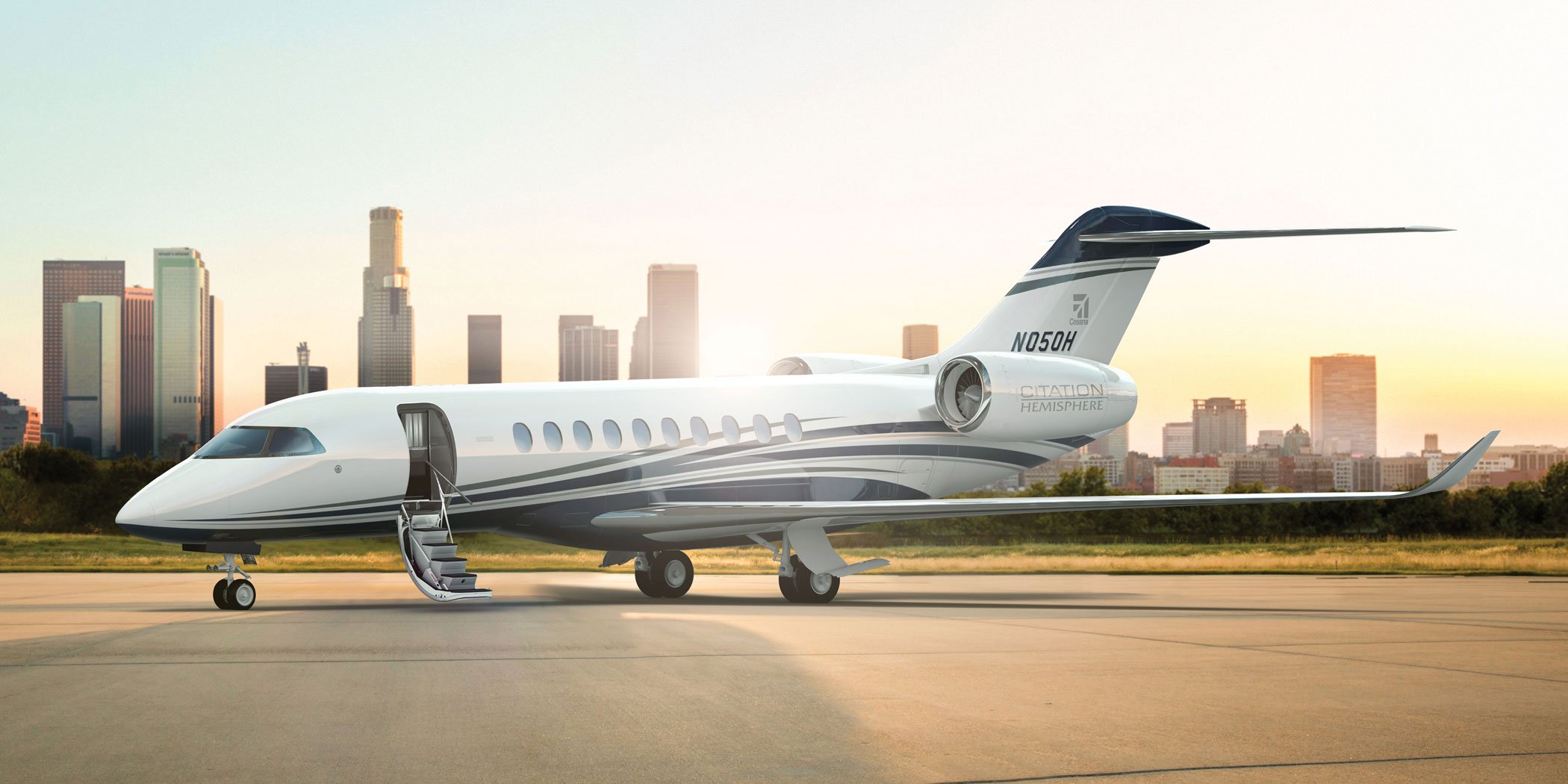
Large-cabin
Cessna Citation Hemisphere
Price: $35 million
Passengers: up to 19
Range: 4,500 nm
For the second time in a decade, Textron has pulled the plug on its large-cabin ambitions. In 2009, it canceled the Cessna Citation Columbus program and now it appears that the Citation Hemisphere has been sent into deep freeze. Rather than a recession, this time it’s ongoing performance shortcomings with the Safran Silvercrest engine that is the impetus for scuttling Cessna’s entry into the “bigs.” Textron suspended the Cessna Citation Hemisphere program last year and officially shelved it this summer.
The Hemisphere was designed to have a top cruise speed of around Mach 0.90, a flat-floor, multi-zone cabin with a 102-inch diameter, and “class-leading operating costs and performance.” Textron CEO Scott Donnelly said that the company had no choice other than halting the program as the Silvercrest engine was the only one available that could “meet the performance point” of the aircraft. Donnelly held out the possibility that the program could be restarted at some future date, but for now, Textron appears to be eschewing the already very crowded large-cabin market.
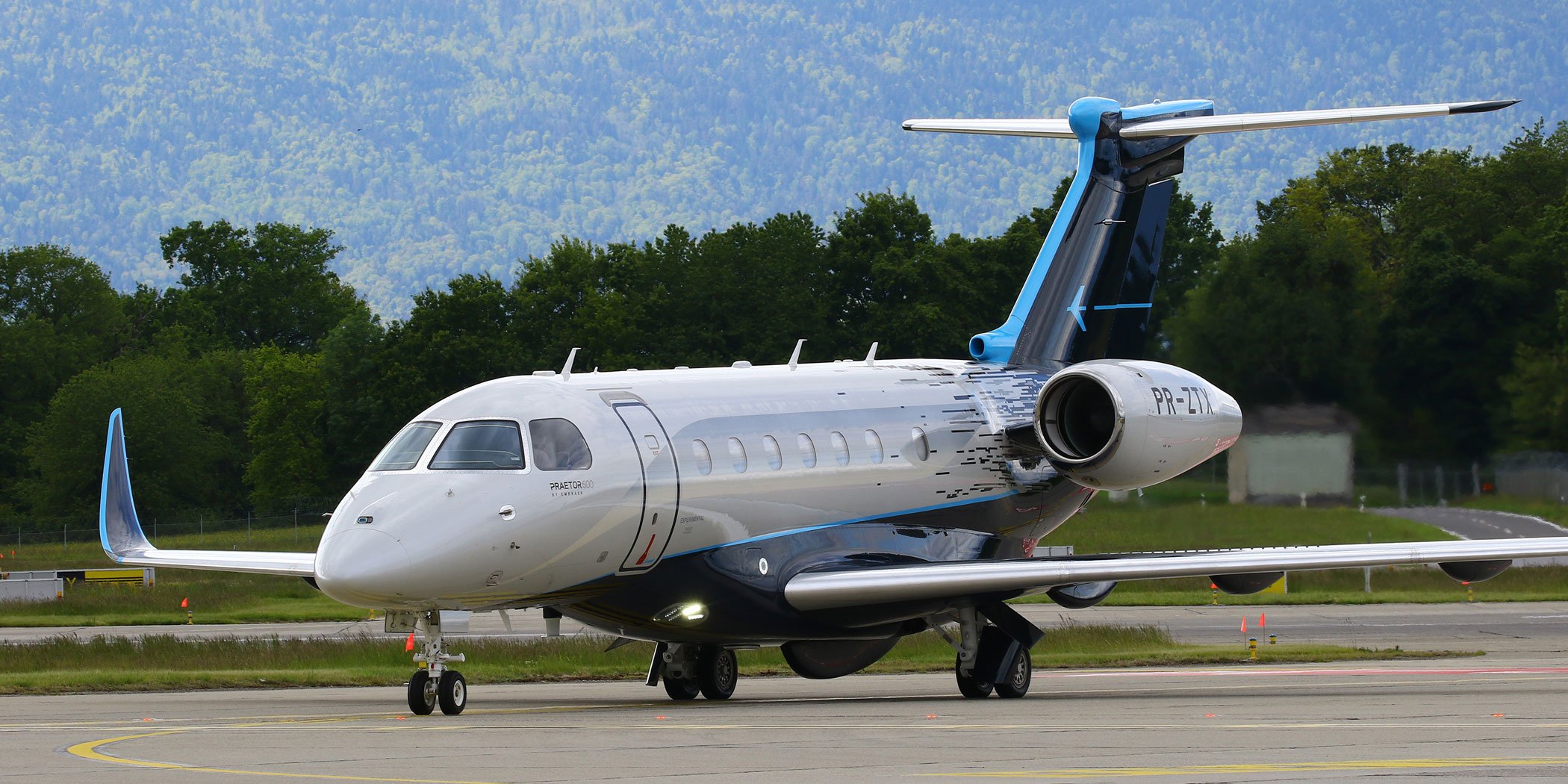
Super-Midsize and Midsize
Embraer Praetor 600/500
600
Price: $20.995 million
Passengers: 8-12
Range: 4,018 nm (4 passengers)
500
Price: $16.995 million
Passengers: 7-9
Range: 3,340 nm (4 passengers)
Embraer has retooled its midsize and super-midsize cabin offerings with new interiors, more fuel capacity, new winglets, increased engine thrust, and updated avionics. Both aircraft offer a 5,800-foot cabin altitude and a six-foot-high flat-floor cabin. The cabin of the 600 is three and a half feet longer than the 500's. The new “Bossa Nova” interiors in both models feature redesigned seat stitching, carbon-fiber accents, and a minimum of visible switchology. The latter is largely thanks to an upper tech panel, which displays flight information and provides cabin-management-system (CMS) features for Honeywell’s Ovation Select system. Gogo Vision inflight entertainment is optional with the addition of the Gogo Avance L5 air-to-ground connectivity system. Both models offer a new global airborne connectivity option with the Viasat Ka-band satcom and IPTV.
The Collins Pro Line Fusion avionics in both aircraft have new capabilities, including a Multiscan radar that adds vertical weather and predictive windshear, cockpit display of ADS-B In traffic, and a synthetic vision guidance system (SVGS) that enables approaches to lower minimums. Embraer’s enhanced vision system, the Collins HGS-3500 compact head-up display, and a Honeywell inertial reference system are optional on both aircraft.
Both models also feature larger winglets and additional fuel capacity to boost range; the 500 carries 950 pounds more fuel while the 600 can tank 2,928 pounds more thanks in part to two lower fuselage-mounted fuel tanks. The additional fuel helps boost the range in the 500 by 350 nm and in the 600 by nearly 900 nm. With the extra weight comes the need for more pavement; fully loaded, the 500 requires 4,222 feet of runway for takeoff while the heftier 600 needs 4,717 feet.
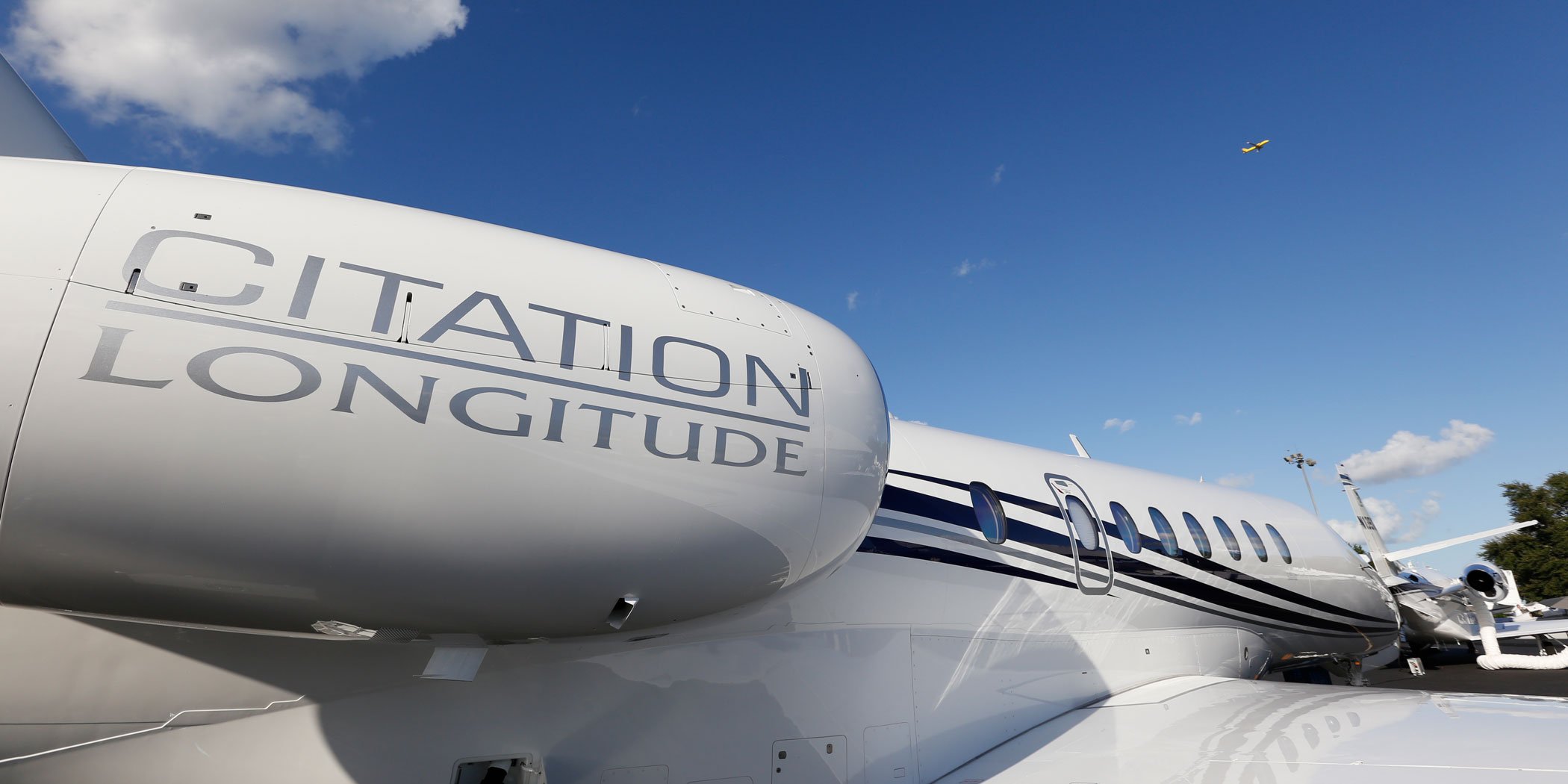
Cessna Citation Longitude
Price: $26.9 million
Passengers: 8-12
Range: 3,500 nm
Cessna’s long-awaited entrant into the crowded super-midsize derby received FAA provisional type certification late last year. Textron Aviation is positioning the Longitude as a superior value proposition—in both acquisition and life cycle—the main reason it eschews expensive systems like full fly-by-wire flight controls. (It has limited fly by wire for the rudder, spoilers, and brakes—“brake by wire”). The Longitude features Garmin's G5000 touchscreen-controlled avionics (similar to the system in the new midsize Citation Latitude) with optional head-up display and enhanced vision systems, a fast cruise speed of 476 knots, and a full-fuel payload of 1,600 pounds. The aircraft will be equipped with the LinxUs system to provide real-time maintenance monitoring and solutions, including when it is airborne. It also has more mechanic-friendly maintenance access ports than past models.
The aircraft shares the midsize Citation Latitude’s flat-floor cabin cross-section—six feet tall and more than six feet wide—making it the narrowest in class. Cabin length is 25 feet. A variety of configurations will be available, with passenger seating for up to 12, although eight to nine will be typical. Other options include a full forward galley and an aft lav with vacuum flushing toilet. The 112-cubic-foot baggage compartment will be accessible in flight.
The stock galley features a sink with potable water, ice drawers, and ample stowage; items such as convection and microwave ovens are extra-cost options. Natural light throughout the cabin comes from 14 large windows. LED lighting is controlled via a wireless cabin-management system that also delivers a menu of information/entertainment choices, such as SiriusXM radio and moving maps. Passengers can operate the system via onboard touchscreens, controllers, or smart devices (with a downloaded app). Iridium satcom is standard. Customer deliveries of the aircraft should begin later this year. Late last year fractional provider NetJets signed an agreement with Textron Aviation to option up to 175 Longitudes.
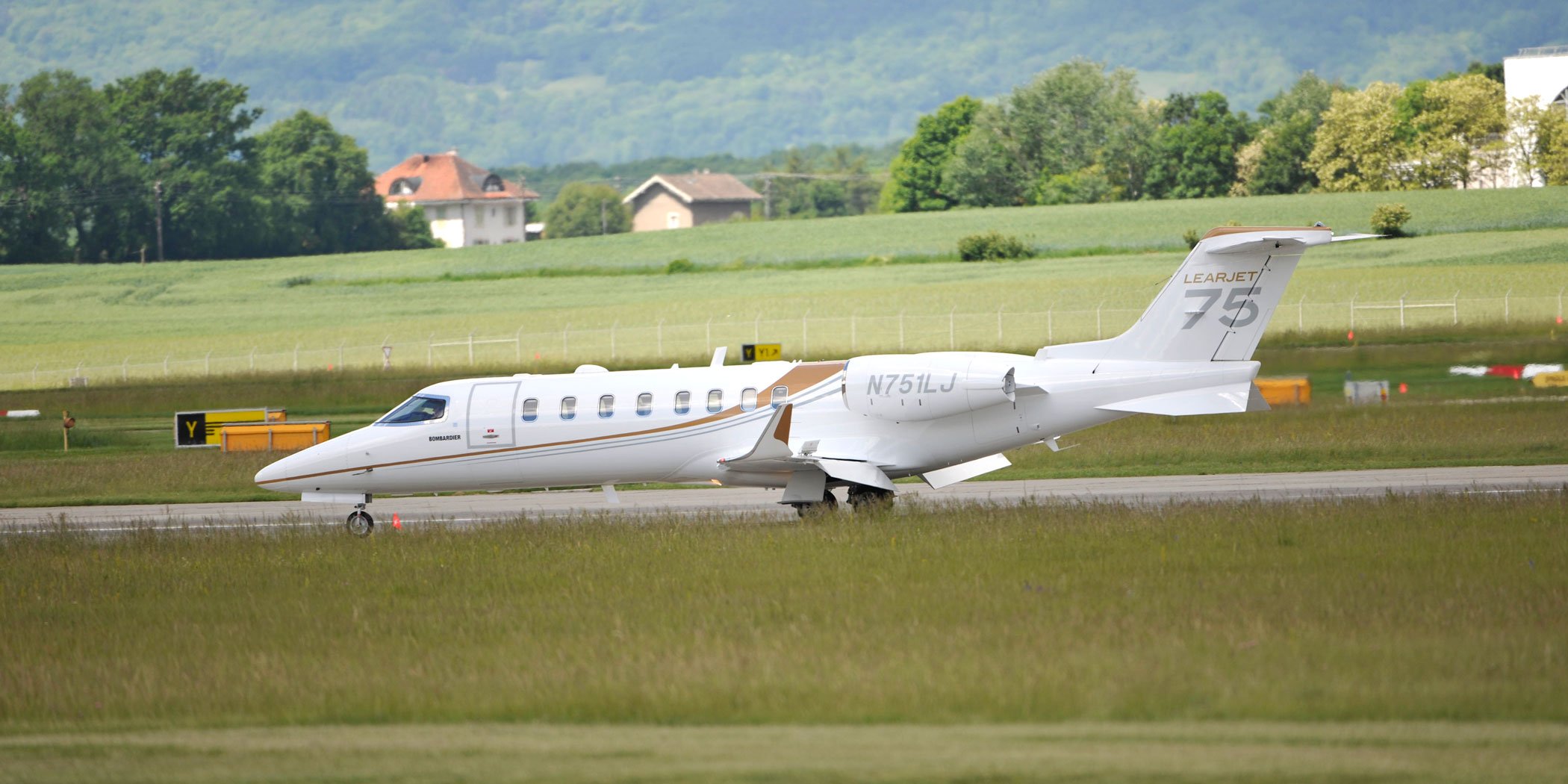
Light Jets
Learjet 75 Liberty
Price: $9.9 million
Passengers: 6
Range: 2,080 nm
In July Bombardier announced that it would offer an updated version of its Learjet 75 model called the Liberty. Two passenger seats, a variety of standard equipment including the auxiliary power unit (APU), and $3 million are subtracted from the former 75 in an effort to reposition the aircraft to better compete with $9 million to $10 million light jet offerings from Cessna and Embraer. The aft-facing seats in the forward section of the cabin are replaced by fold-down ottomans and fold-out tables creating what Bombardier calls an “executive suite” with more legroom.
Gogo 4G airborne connectivity is standard throughout the aircraft as is the Bombardier Vision flight deck, with updated Garmin G5000 avionics. Deliveries are expected to begin in 2020.
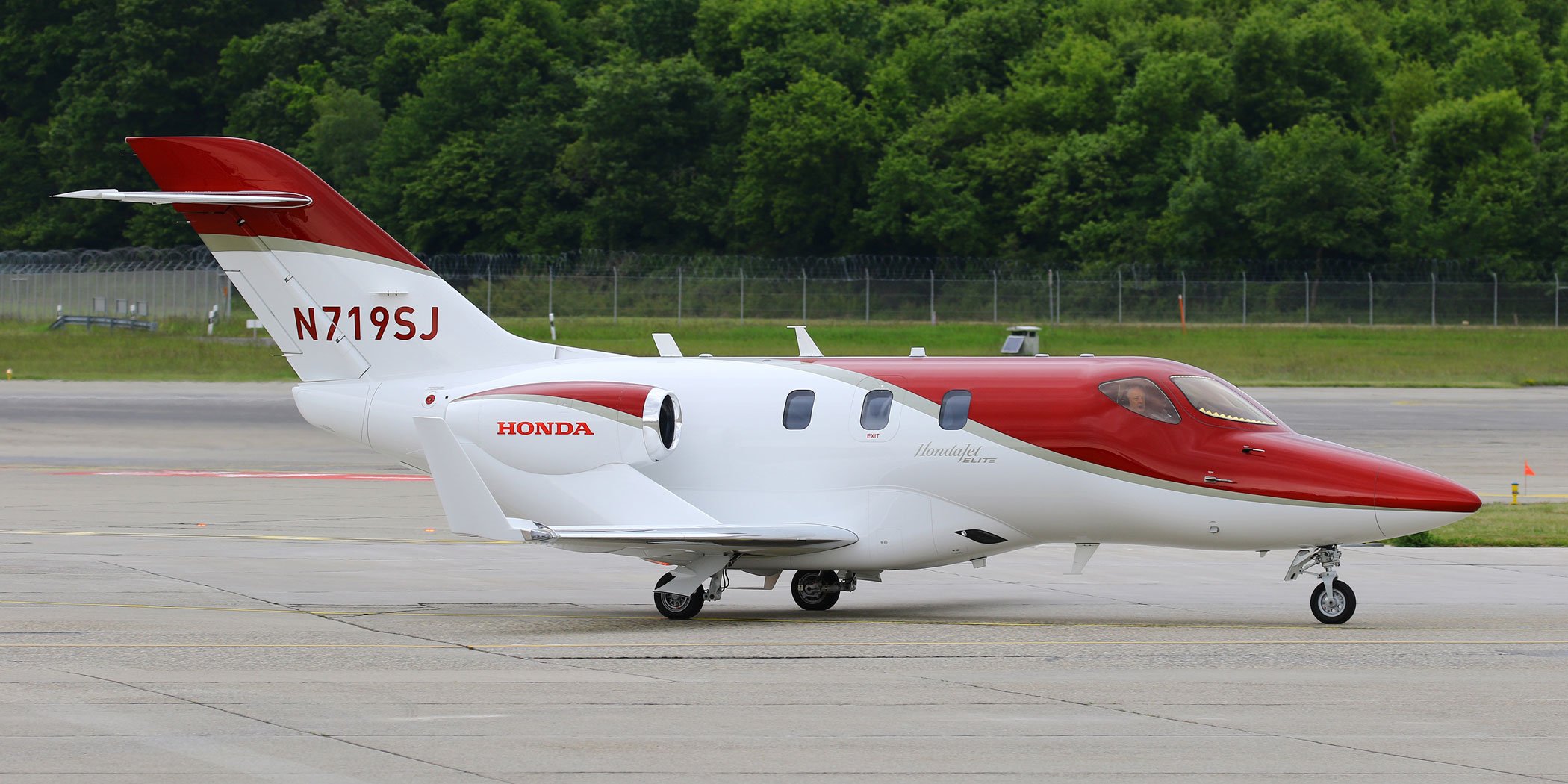
HondaJet Elite
Price: $5.25 million
Passengers: 5-6
Range: 1,437 nm (4 passengers)
Refinements made on this upgraded HondaJet include updated avionics, aerodynamic clean-ups, and interior improvements that result in more range, shorter runway requirements, and a quieter cabin. The avionics updates to the Garmin G3000 system include faster processors and stability and underspeed protection. More fuel capacity combined with trimming 100 pounds from the old aircraft have increased range by more than 200 nm while adding nearly 200 pounds of payload capacity (overall, the aircraft’s max takeoff weight is up 100 pounds due to the extra fuel). Aerodynamic clean-ups include an extended horizontal stabilizer, tighter hinge gaps, and elimination of the vortex generators. A new perforated engine inlet design reduces noise in both the cabin and outside of the aircraft.
Inside the cabin, the belted lav seat is now certified for takeoff and landing, adding extra passenger capacity for those who opt to take the aircraft with the optional forward galley in place of the side-facing single passenger seat opposite the entry door. Customers now also have a wider selection of interior fabric and aircraft paint choices as well as the option of ordering the speakerless, transducer-based Bongiovi audio system with signal processing that provides surround-sound even when wearing headphones. Deliveries of the Elite began last year. Through August, Honda had delivered 130 aircraft overall.
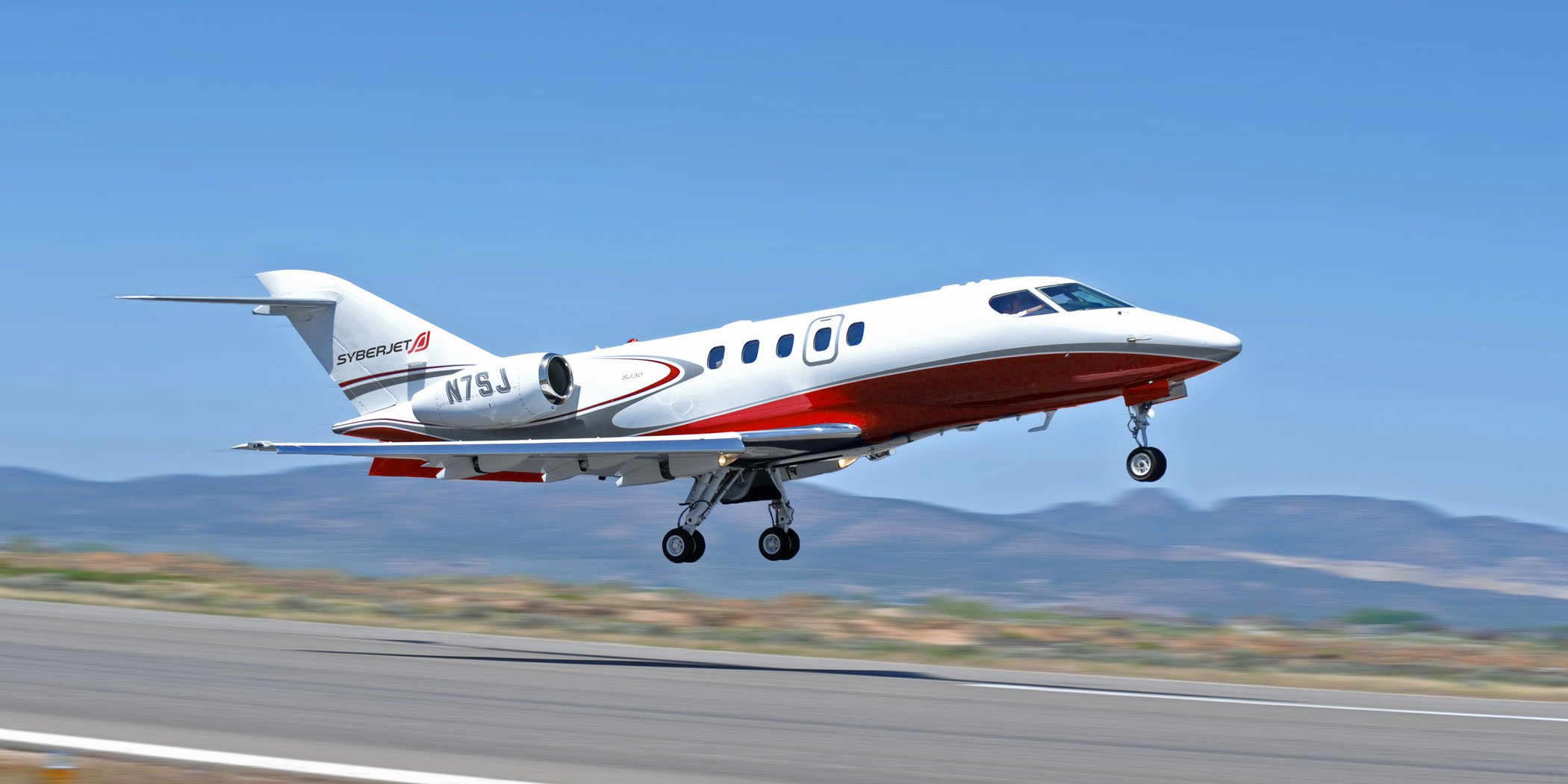
SyberJet SJ30i and SJ30x
Price: $8.5 million
Passengers: 4-5
Range: 2,500 nm+
MSC Aerospace is still working two new versions of the SJ30 light twinjet: the SJ30i will feature an upgraded “Sybervision” avionics suite featuring the Honeywell Primus Apex 2.0 system with 12-inch displays and a new interior. The avionics and interior are lighter than their progenitors and take an estimated 200 pounds out of the airplane. A follow-on aircraft, the SJ30x, will feature uprated Williams International FJ44-3AP-25 engines and is expected to provide a variety of performance benefits including higher cruise speed at altitude, faster climbs, more payload, and better high and hot performance. It will also feature single-point refueling.
The SJ30 program began in the late 1980s and the airplane, the SJ30-2, finally received FAA certification in 2005. Since then, the company has had several different corporate owners and only eight examples of the Mach 0.83, 2,500 nm, seven-seat jet were produced. The aircraft holds three world records for speed and distance. It is designed with a 30-degree swept wing for high speed and efficient cruising and with leading-edge slats and flaps that are optimized for low-speed flight. The SJ30 has a maximum altitude of 49,000 feet, maintains a sea level cabin to 41,000 feet, and is approved for single-pilot operations.
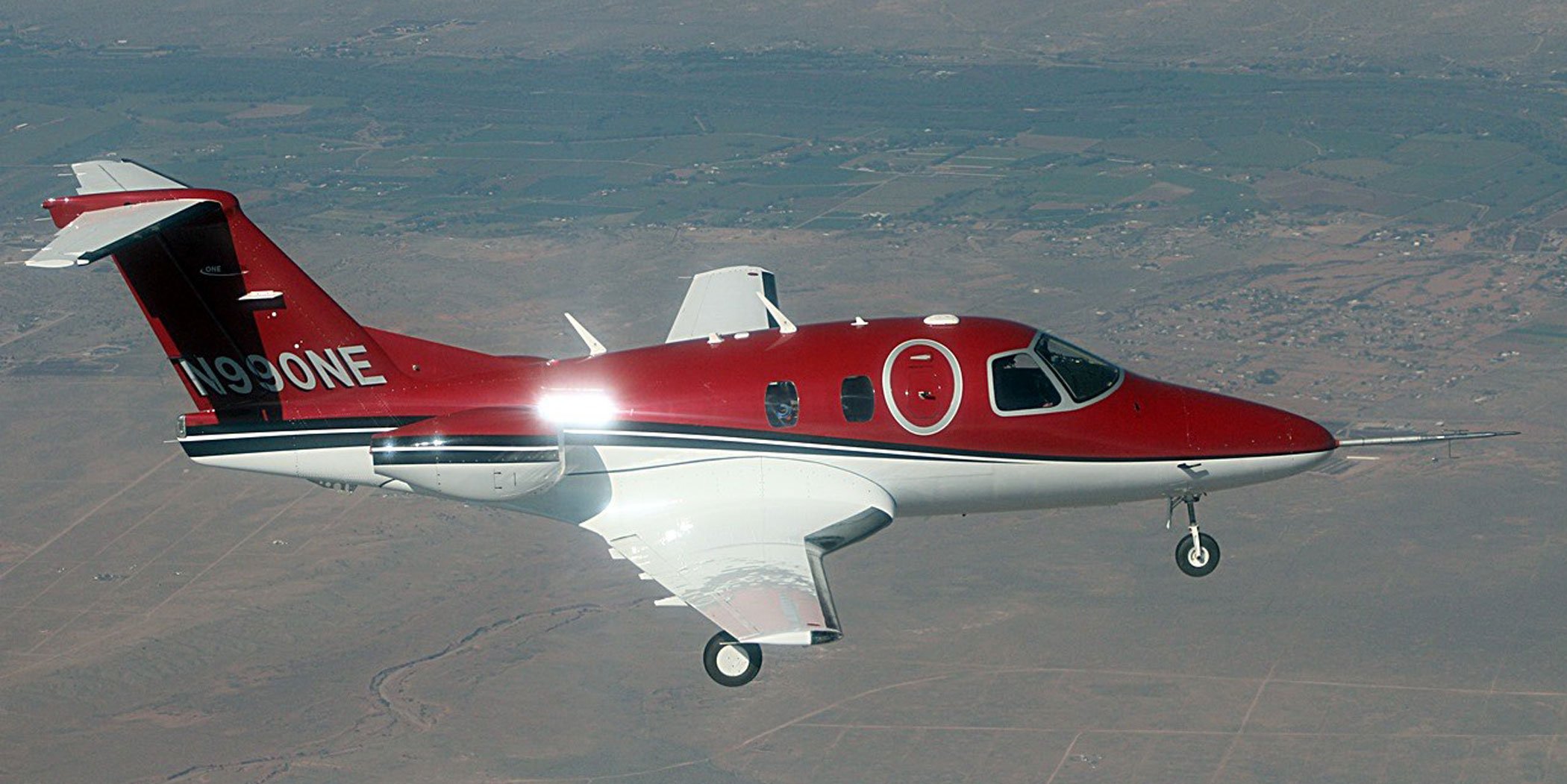
Eclipse EA700
Price: $3.6 million
Passengers: 4-5
Range: 1,470 nm
The future of this program remains unknown as the company is currently being restructured under bankruptcy proceedings. Limited test flying had been conducted of the EA700’s wing design mated to an Eclipse 500 fuselage. Compared to the Eclipse 500/550 series, the 700 features Garmin G3000 avionics, a four-foot-longer wingspan, a 14-inch fuselage stretch and a longer horizontal stabilizer, increased speed and range, and better high/hot performance. The fuselage stretch increases baggage volume by 31 percent and cabin volume by 7 percent.
The 700 woud be powered by Williams FJ33 engines. Maximum cruise speed increases to 383 knots.
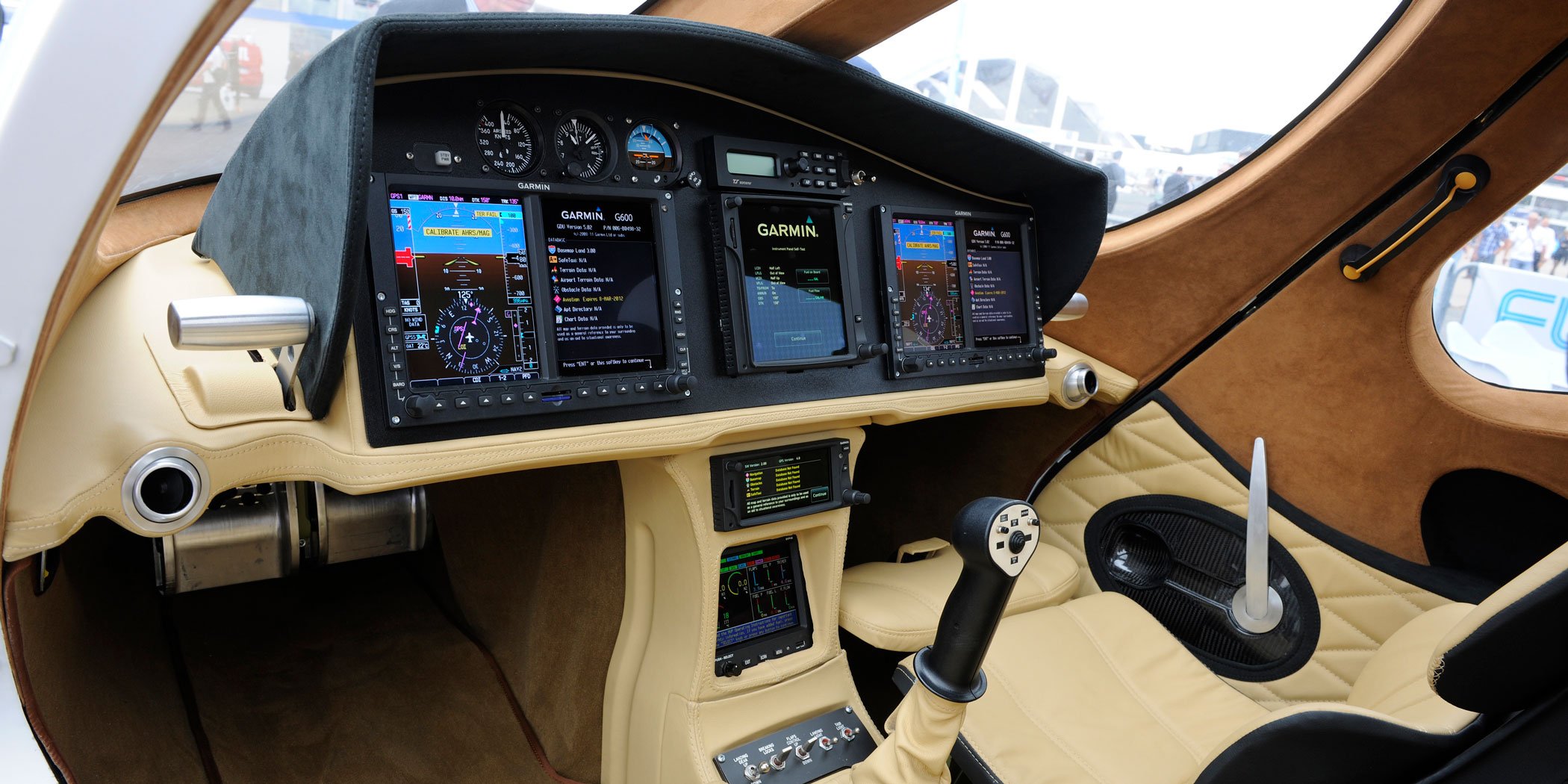
Single-engine Jets
Flaris LAR1
Price: $2.2 million
Passengers: 3-4
Range: 1,400 nm
Nearly six years after it was announced and after multiple schedule slippages, the Polish Flaris LAR1 single-engine personal jet made its first flight on April 5 at Babimost Airport in Zielona Gora. Testing is currently underway on the aircraft’s ballistic parachute and whole aircraft airbag system that cushions the bottom of the fuselage after parachute deployment. The $2.2 million five-seat jet is powered by a single 1,900-pound-thrust Williams FJ33-5A turbofan, has a targeted top speed of 380 knots, stall speed of 62 knots, estimated maximum range of 1,400 nm, and ceiling of 45,000 feet.
Flaris features rear-hinged main cabin doors reminiscent of 1960s Lincoln Continental cars, detachable wings and stabilizers, a fuselage fuel tank, electric deicing, an in-the-nose whole-aircraft ballistic parachute, and Garmin G600 avionics. The aircraft is being built by Metal-Master and is partially funded by the European Union.
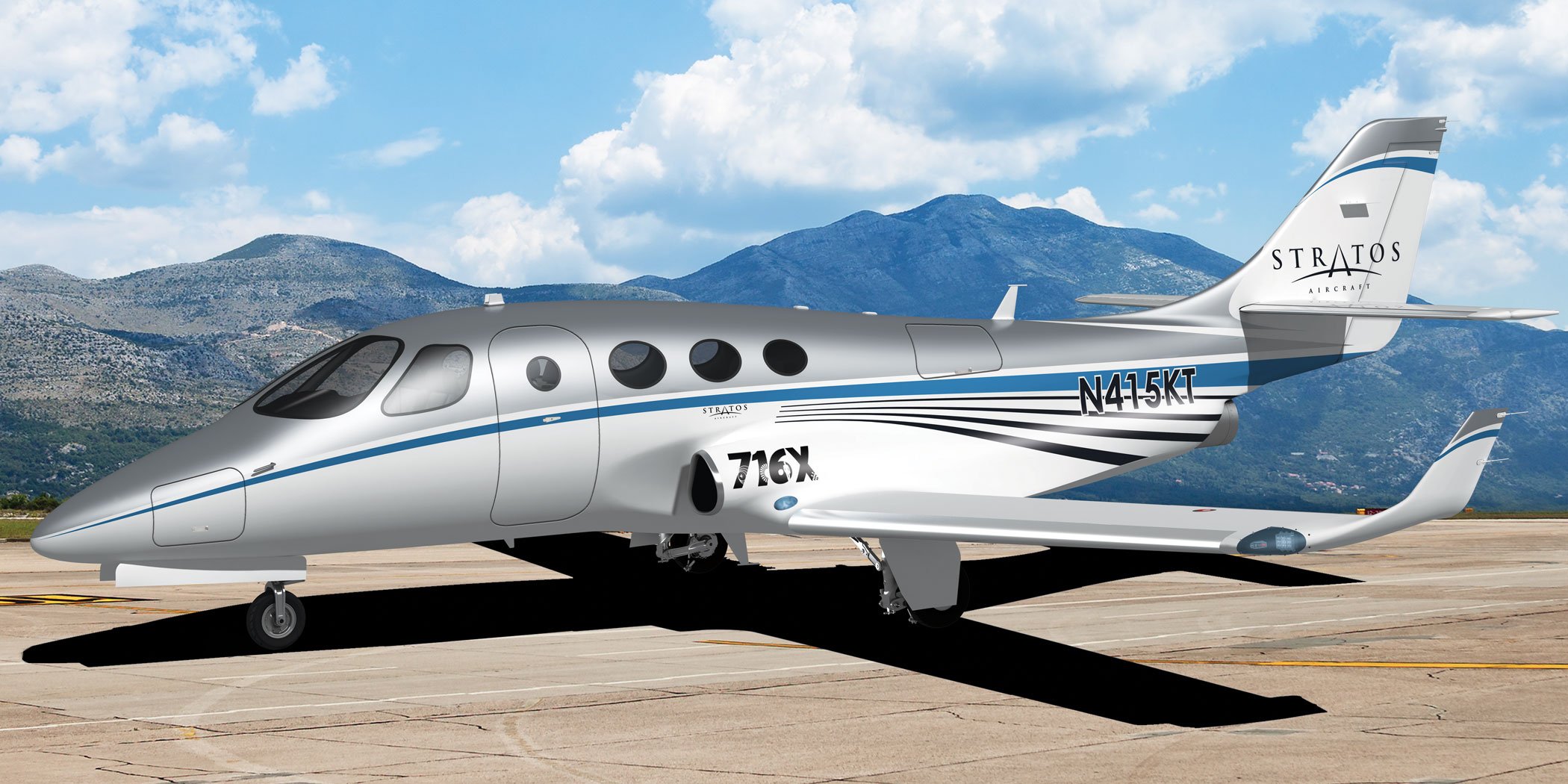
Stratos 716X
Passengers: 4-5
Construction is continuing on the first Stratos 716X proof-of-concept kit aircraft. The new Model 716X features seating for six and is larger and wider than the 714, with a fuselage that is 31 inches longer and two inches wider than that of the 714. It will be powered by a 3,000-pound-thrust Pratt & Whitney Canada JT15D-5 turbofan and feature an electronic engine control. The 716X’s instrument panel will feature a variety of Garmin products, including dual G3X displays, GTN 750 GPS/com, and integrated autopilot. In addition, the jet will have air conditioning, a fully automated pressurization system, custom switch panels, and several Mid-Continent products, including a Standby Attitude Module with backup battery, and a pressurization monitor.
The company’s goal is to sell three kits per year for now and eventually to put the aircraft into certified production four to five years in the future. Stratos says the average kit will take 2,500 hours to build.
While Stratos has not formally released price and performance data, it is expected to be close to that of the 714 which was designed to cruise at 400 knots with a range of 1,500 nm.